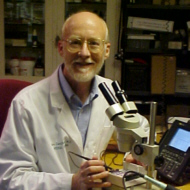

The Project
Unethical Human Experiments, Carcinogenic Viruses, and Murder during the Cold War.
by James Stewart Campbell, MD.
2013

In the early morning of July 21, 1964, renowned orthopedic cancer researcher, Doctor Mary Stults Sherman, MD, age 51, was found dead in her New Orleans apartment. She had been stabbed multiple times and her body partially but severely burned. There was only minor fire damage to the apartment, however, and no indication of forced entry or signs of a struggle.

Despite an autopsy that showed her right arm completely missing with only a small charred stump of the humerus remaining, the right chest wall and abdominal muscles burned away to expose the pleura and intestines, a precise and fatal stab wound to her heart, and multiple post-mortem random stab wounds, the police made only a half-hearted attempt at cracking the case and dismissed it as a slaying with sexual undertones, mainly on the fact that Dr. Sherman was a widower who lived alone. Her murder remains officially unsolved to this day.
Doctor Sherman’s murder hit my parents hard. My father, Crawford J. Campbell, MD, had worked with her during his Orthopedics residency at Billings Hospital, Chicago from 1946 to 1949, and they became good friends. My mother and Dr. Sherman spoke fluent French together, and at times would take outings to the lakeshore. Dad worked closely with her at the hospital, helping victims of bone cancer. Both my parents thought of her as kind, considerate, brilliant, and fun. Years after we moved to Albany, NY, and Dr. Sherman to New Orleans, they would get together at meetings and Dr. Sherman would sometimes stay with us in Albany. After her death, Dad pulled himself together and wrote her professional obituary. If he had known what we know today of the actual circumstances of her death, he might have written it much differently.
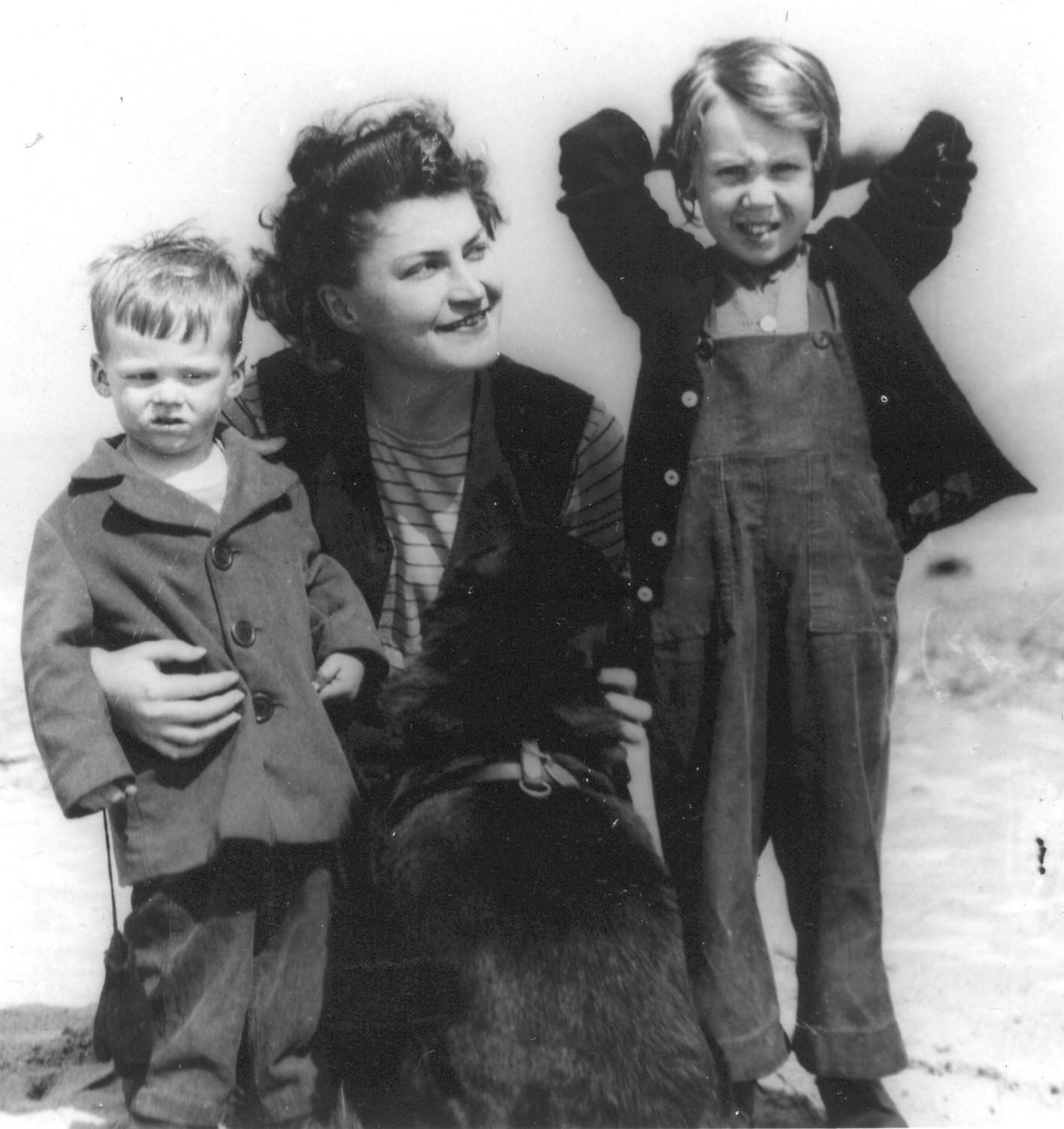
Dr. Mary Sherman with
the author (left) and his sister, Chicago 1946
In the almost 50 years since Dr. Sherman’s body was discovered, Ed Haslam, a New Orleans native (and coincidentally also the son of an orthopedist) has been slowly uncovering the truth behind the murder, and the picture that emerges is far different than originally thought. His writings led me to another book by Judyth Vary Baker, who worked with Dr. Sherman on The Project – a covert and clandestine effort to genetically change carcinogenic viruses for both ethical - and unethical – purposes. The Project would eventually consume the lives of many people, including Dr. Sherman.
As strange as that may sound, one must remember that the early 1960’s were a time of great fear in the United States. The Cold War against Communism and Communist Expansion was raging on all fronts. Castro had somehow lived through every effort to assassinate him, and Soviet missiles were being set up in Cuba only 90 miles off the Florida coast, US soldiers were being sent to stop the Communist advance in Vietnam, and the military-industrial complex was lobbying hard for more war in the name of “National Security.” Spies, real and imagined, were everywhere, and the Central Intelligence Agency (CIA) and Federal Bureau of Investigation (FBI) were on high alert and ready to help.
To complicate matters further, though the national Polio Vaccine program that began in 1955 had been a great success, with hundreds of millions of doses given, by 1957 several virologists had found the vaccine was contaminated by the carcinogenic “Polyoma” virus, also known as SV-40.
SV-40 infection was endemic in the laboratory-kept monkeys that produced the vaccine, and the virus could pass through the filtration methods used for poliovirus purification. It would take until the 1963 to solve the contamination problem, and even then the contaminated vaccines continued to be given until they were used up. Officials at The National Institutes of Health (NIH) were able to keep the contamination secret until 1960. During this time a huge covert project was undertaken: SV-40 and other viruses would be modified to make a preventative vaccine to stop a possible epidemic of induced cancer. If certain cancers were caused by virus, antiviral vaccines should be preventative. This had to be a hush-hush project, however, to prevent public panic (and the huge lawsuits that would go with it). The millions of dollars required would have to come through unaudited funds such as the CIA, and any laboratory facilities had to be secret and clandestine, or on secured government property.
Into this hurricane of good and evil The Project was born. The fitting birthplace: New Orleans, Louisiana. By the time it was fully assembled, supplied, and operating in 1963, Project assets included covert wet-laboratory space (a kitchen) and a separate animal facility for thousands of mice – including enough breeding mice to supply the infant mice needed for the virus propagation. Both were located in unsecured and unvented upper-story apartments near the center of the city. Certainly NOT the place to safely grow and pulverize carcinogenic and contagious mouse tissue, but this was for national security… Even Doctor Sherman’s apartment refrigerator was used for specimen transfer and storage of these extremely dangerous viruses, and she would examine the infected tissues in her kitchen with light microscopy. She also had access to a laboratory on Prytania Street where there was an electron microscope for visualizing the viral particles. The main work of viral genetic modification, however, was done on government property – in the Infectious Disease Laboratory Building of the US Public Health Service Hospital. There a 5-Million Volt particle accelerator had been installed in 1960 for use by The Project. It would be needed to blast genetic changes into the DNA of the small simian viruses like SV-40. Funding for this huge, multi-million dollar, three-story high stainless steel machine apparently came from untraceable sources, thus indicating covert involvement.
But no Project could function without trained and professional personnel. That is where Dr. Sherman came in. She was to become the de facto Medical Director. Because of her work with bone tumors and radiation therapy, she knew the technical aspects of viral modification and could lead a group effort. Initially The Project seemed directed at developing a vaccine for cancer, but as time progressed, developing a weaponized carcinogenic virus became the main function of the lab.
Above Dr. Sherman was Dr. Alton Ochsner, founder of the rich and famous Ochsner Clinic of New Orleans, accomplished surgeon, and fervent anti-communist. He could be considered the Director of The Project, and was probably in close contact with officials in Washington, D.C. who supported and encouraged the effort to modify carcinogenic viruses with the goal of killing Fidel Castro with an untraceable weapon.
Then there was “Doctor” David Ferrie who could be thought of as Laboratory Director. He was not in any sense a doctor, but an erstwhile priest, commercial pilot, and general facilitator for the Project when things needed to get done. Ferrie had obtained the apartments for the labs, and recruited other trusted workers for lab transport and animal care. History has shown Ferrie to be a CIA intelligence operative.
The main Laboratory Technician and Literature Researcher was Judyth Vary Baker, a 20-year-old college student who had been working with virus cancers since her high school days. Dr. Ochsner had lured her to New Orleans in the spring of 1963 to work on this mysterious Project, with the promise that he would give her free admission to Tulane Medical School in the fall if she would work diligently and maintain secrecy – no records were to be kept! It would turn out to be a fateful summer experience.
The last member of the team was 23-year-old Lee Harvey Oswald, who took the role of driver, equipment procurer, and assistant laboratory technician when needed. He also had to know all about the virus and its transport, because it would be his job to smuggle it into Cuba to use against Castro. Oswald’s connections with the CIA, FBI, and the local Mafia helped his job immensely.
Together this group became a strangely powerful, efficient, and effective team that entered into this dangerous and murky task.
That spring, summer, and fall of 1963 The Project would develop, test, and deploy a proven carcinogenic virus lethal to humans. They were able to perform this immense undertaking because they could cut all the corners: No Institutional Review Board to satisfy, no Federal Regulations to hold them back, no budget limits to slow them down. And no ethics rules to consider… except one’s own conscience, clouded by the urgency for “national security.”
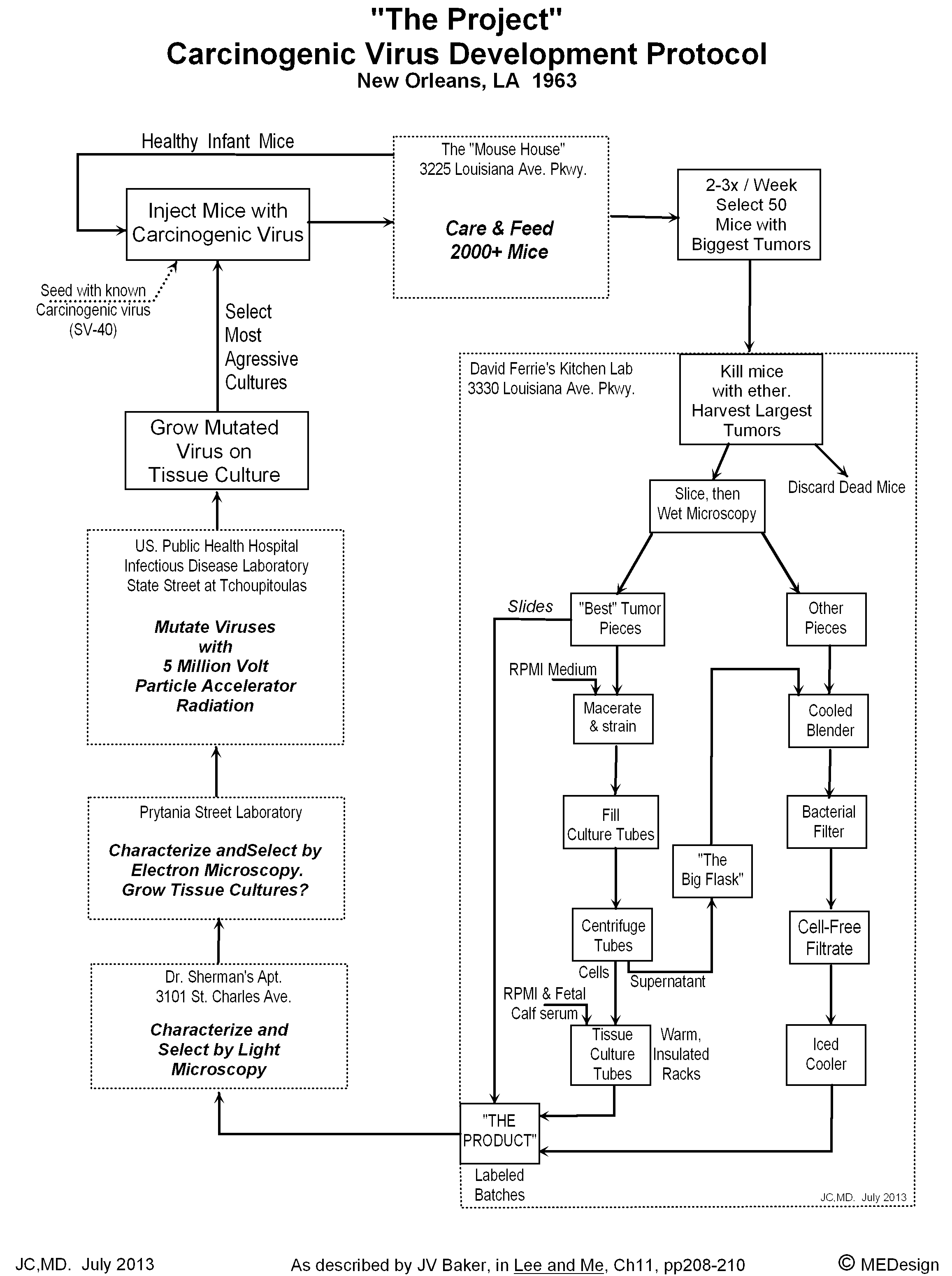
Development of the “weapon” went like this: Newborn mice were injected with wild strain SV-40 virus to “seed” a process loop to accelerate carcinogenic mutation. The weak immune system of these young mice could not fight off the virus, so some developed tumors. Several times a week, fifty mice with the biggest palpable tumors were selected. After killing these mice, the largest of the tumors were harvested, selected by microscopy, ground up, mixed with “RPMI” and other media, and centrifuged. The tumorous cells would settle to the bottom of the test tube to form the basis of tissue cultures to be grown elsewhere. Then the supernatant and the remainder of the tumor tissue were macerated in Ferrie’s kitchen blender to form a “tumor soup.” (The blender was also used to mix drinks during parties at his apartment, indicating the recklessness of The Project…) This dreadful “soup” was then filtered to make a cell-free solution rich in carcinogenic viral particles, which, together with the centrifuged material for tissue culture and the microscope slides became “The Product” of the lab. The Product was transferred to Dr. Sherman’s apartment where she would further examine the tissues microscopically and take the best samples for examination by electron microscopy at the Prytania Street laboratory. Finally, the best and most aggressive tumor virus samples were taken back to the electron accelerator lab to be further mutated by radiation in secret late-night sessions. The irradiated viruses would then be grown on tissue cultures and the most aggressive colonies selected for injection into healthy newborn mice. The cycle would then begin again. It was a crude and imprecise method in that no one knew just what viruses were being modified or created. Was a mutant SV-40 viron becoming more aggressive, or was it another virus that was being made more dangerous by the process? It did not matter to The Project, as long as The Product was lethal to humans.
Lethality to humans was a big problem, however. The mouse tumors were not transferring successfully into primates, due to their different and more powerful immune system. If healthy monkeys were not developing tumors from the injected mouse viruses, humans would probably react the same way. It was necessary to first irradiate the monkeys to hamper their immune systems so the tumor could survive. By mid-July the tumors were beginning to “take” in irradiated Marmoset monkeys. The virus was not only lethal to the injected monkeys, but also to the control group of irradiated monkeys that were housed with the injected animals. The virus had become contagious and transmissible! Expensive infection prevention equipment was quickly installed in Ferrie’s kitchen “laboratory.” Full surgical attire while processing specimens in negative-pressure filtered glove boxes became routine. Meanwhile the workload doubled, then quadrupled on orders from Dr. Ochsner, who was becoming impatient for proof that the virus would work on humans. Under this pressure, a protocol to induce cancer in an unsuspecting human was devised: The victim had to first be diagnosed falsely with “pneumonia,” given a radiation overdose secretly during a bogus “chest X-ray,” and then intravenously injected with the carcinogenic virus Product disguised as an antibiotic. Repeat as necessary until the victim dies of cancer.
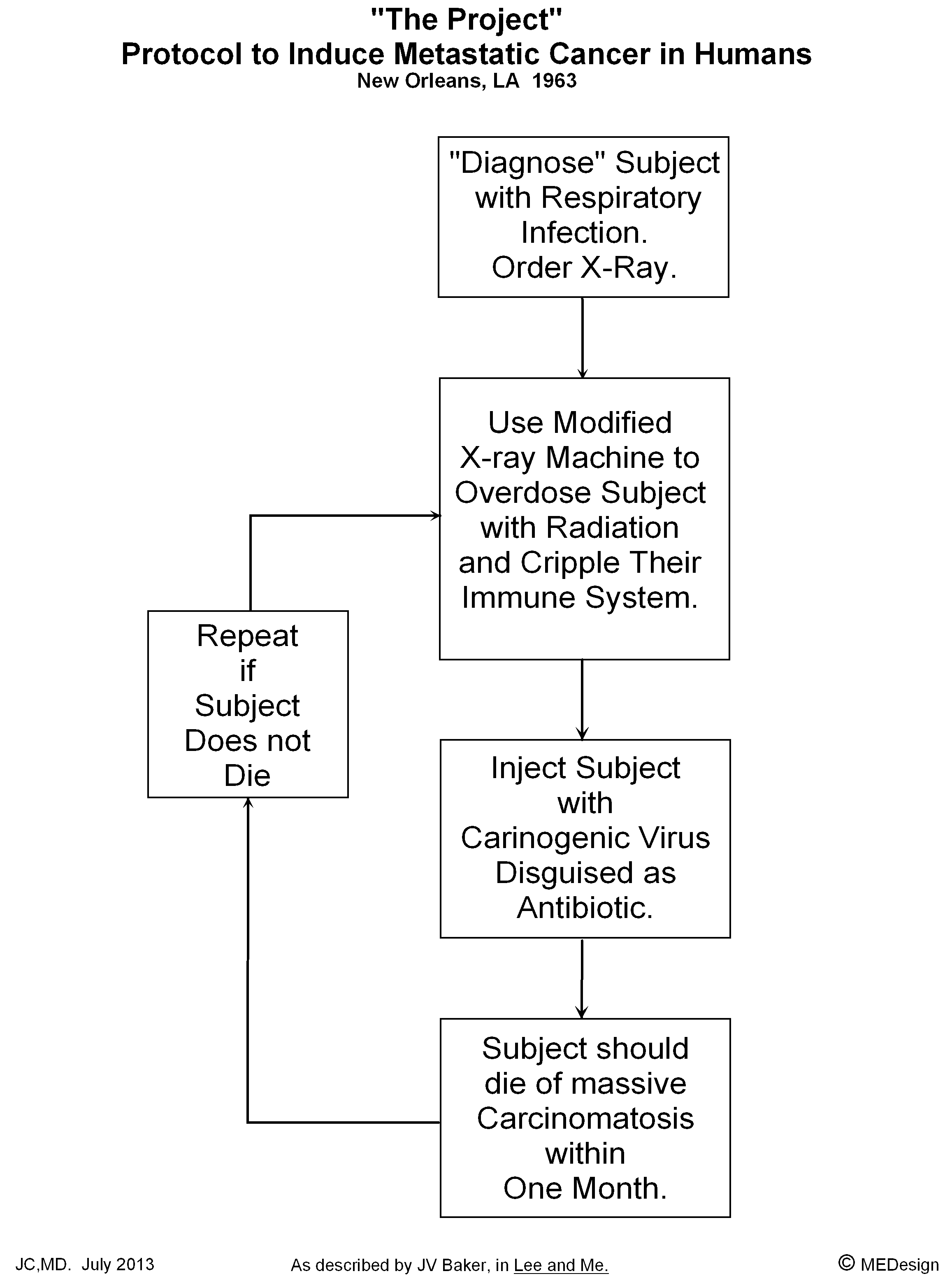
By the end of August the human experiments began. At least one healthy young “volunteer” prisoner from Angola Penitentiary was transferred to Jackson State Mental Hospital for the experiment. It is doubtful that the full risks were explained to the prisoners, or they might not have participated in the possibly deadly injections, let alone undergoing the overdose of X-rays required for the virus to “take.” The subject was first given a long exposure to X-Rays to cripple his immune system, and then injected intravenously with the viral soup. He was kept at the Jackson facility for isolation and observation. The volunteer died of massive cancer metastasis in 28 days.
On the 29th of August, this medical murder was too much for young Ms. Baker’s conscience and she wrote a very brief note to Dr. Ochsner that read “Injecting disease-causing materials into an unwitting subject who does not have a disease is unethical.” The result? Dr. Ochsner summarily fired her from The Project, not for her ethical objection, per se, but for putting anything about The Project in writing (and him in jeopardy). Suddenly, gone was her summer job as well as the promise of being admitted to Tulane Medical School. By the 3rd of September, she and husband Robert left New Orleans for Florida and anonymity. It was a move that would save her life so she could later tell her part in this story. Powerful people were keeping The Project secret no matter what the cost, and she knew a lot of the players.
The Project however, apparently went on under Doctor Ochsner. David Ferrie continued to be involved, though the mouse colony was moved to the Infectious Disease Lab of the Public Health Hospital. It is also likely that some virus production moved to monkey hosts or cell cultures. In September, Oswald tried to smuggle the virus into Cuba via Mexico, with the cell culture cleverly disguised as a workman’s lunchbox thermos full of broth, but somehow the attempt failed. By mid-October Oswald had a new job in Dallas, Texas, and was subsequently shot and killed November 24th while under arrest for the assassination of President Kennedy. He would not be testifying about any Project.
Doctor Sherman continued the work of viral modification, however. She may have been working on the weaponized virus, perhaps to make it so strong that the radiation overdose would not be necessary for successful carcinoma implantation. Or perhaps she was working on the still hush-hush project to create a vaccine for wild-strain SV-40 infection, the dangers of which were being downplayed to the public by the NIH. Maybe she was working on both, we will probably never know. But now the story of her death can be revised to fit all the circumstances. It goes something like this:
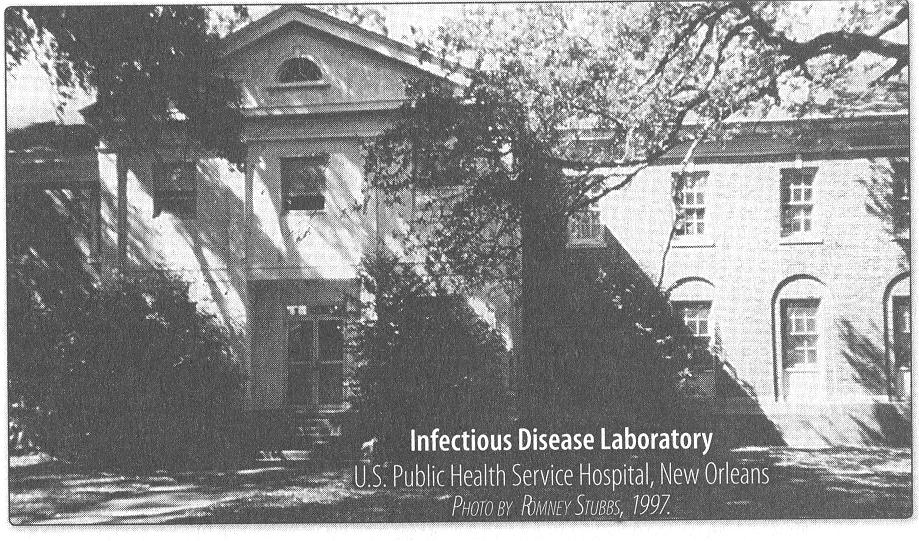
Probable Site of the Death of Dr. Mary Sherman
It was evening on Monday, July 20th 1964, when Dr. Sherman left her apartment to go the Electron Accelerator Laboratory at the Public Health Hospital. Her secret work had to be done at night when the other staff would not be there. Some new viral samples were to be irradiated by the high energy particles produced by the huge device. But something went terribly wrong. Perhaps a safety interlock switch malfunctioned, the equipment had been modified improperly, or maybe it was human error – an untrained operator turning the wrong switch at the wrong time. Whatever the cause, Dr. Sherman reached into the machine with her right hand and touched a high-tension point. Her right chest wall was in contact with the conductive case of the machine. Suddenly there was a blinding flash as a 5-million volt arc travelled down her arm, vaporizing it within milliseconds. The massive current also destroyed her right side of her thorax, flank, neck, and scalp. Both her eyes were also burned and shrunken. There must have been panic in the control room. The body of the famous cancer researcher laid limp and smoldering on the laboratory floor, still alive but probably unconscious. There ensued a quick struggle between truth and secrecy. Dr. Ochsner was likely informed of the situation. Secrecy won the struggle. Someone with good anatomical and surgical knowledge thrust a narrow-bladed knife into Dr. Sherman’s chest through the 6th intercostal space just to the left of the sternum – creating a single 1.5 cm laceration into her right ventricle. A common folding pocket knife could have done the job. She died shortly afterward, exsanguinating into her left pleural cavity. Her murder was probably justified at the time as an act of euthanasia, or mercy killing. Dr. Sherman probably would be blind and badly crippled from the intense electrical trauma, if she could survive at all. The murder was probably also justified for “national security” – Doctor Sherman would never testify about The Project. But first they had to get her body out of the laboratory. She could not be found there, injured while performing ultra-secret experiments. There could not be any inquiry into The Project. A cover-up was imperative.

So Doctor Sherman’s body was wrapped in something waterproof, perhaps a body bag. Then the body was driven in her car to her apartment where the door was opened with her key and the burglar alarm was shut off. Remember that Dr. Sherman’s apartment was used as a Project specimen transfer point, thus others in The Project knew how to silence her alarm. Once the body was quietly carried up the stairs and inside, it was unwrapped on the bed. Then, to confuse any investigation, her corpse was stabbed multiple times on the hands, arms, abdomen, leg, and genitals. Lastly a fire was lit to explain the massive body burns, but this fire only smoldered, producing a lot of smoke but little heat – certainly not the thousands of degrees required to destroy her arm and chest wall. The whole operation was done so quietly the neighbors were not disturbed. No tell-tale fingerprints were found in the apartment or her car, indicating that those who did the cover-up knew what they were doing. No one was ever arrested in Dr. Sherman’s death, and the circumstances were never fully investigated.
With Dr. Sherman’s death, The Project apparently came to a screeching halt. According to information obtained by Ed Haslam, the electron accelerator at the Public Health Hospital was secretly and rapidly dismantled under military guard. But The Product – the active carcinogenic virus – what happened to it? If stored at the temperature of liquid nitrogen it could be kept indefinitely, and could be brought back into tissue cultures and animals at any time, as potent as ever. Also, had Dr. Sherman been able to develop the virus further to make the radiation overdose step unnecessary?
Arrest Photo of Jacob Rubenstein, AKA Jack Ruby, Dallas, 1963.
We can get a glimpse of what may have happened by investigating the death of Jack Ruby – two and a half years after the death of Dr. Sherman. Awaiting an appeals trial for the shooting of Oswald, Ruby was a prisoner in the Dallas County Jail until twenty-five days before his death, when he was moved to Parkland Hospital for “pneumonia,” which was quickly re-diagnosed as lung cancer. Prior to the hospital transfer he had received injections “for a cold” while in the jail, but he told one of his jailers he knew it was “cancer cells.” More importantly, it was reported by a former Dallas law officer that Ruby had been exposed to x-rays for fifteen or twenty minutes at least once. This indicates that the weaponized virus still required a compromised immune system to take hold. The Project had not been able to make a super-virulent tumorous virus that could infect a healthy human. But the virus was potent enough in Ruby’s irradiated condition. An autopsy showed that he had traces of white cancerous tumors coursing throughout his body, with the greatest concentration in the right lung, indicating where the intravenously injected micro-emboli of The Product may have lodged before being spread to the rest of the body. There was no sign of a primary tumor elsewhere. Further electron microscopic analysis of the cancer cells showed them to have microvilli, indicating a digestive system origin, not a lung primary. Apparently the possibility of an induced viral carcinomatosis was not entertained, but the manner and timing of Ruby’s death makes it highly suspicious. It is quite possible the carcinogenic virus strain has been kept frozen but alive in some secret laboratory to this day.

And what happened to the millions of people who were given the polio vaccine contaminated with the known carcinogenic wild-type SV-40 virus? Apparently a vaccine was never developed. Looking at cancer occurrence in the USA from 1973 to 1988, the rates of five cancers rose significantly (lung 35%, breast 34%, prostate 60%, lymphoma 60%, and melanoma 90%). Other cancer occurrence rates remained mostly unchanged during the same period, indicating a cellular selectivity in the mechanism of this increased oncogenesis that a viral vector might possess. Today, SV-40 DNA “snippets” are frequently found in tumors of many types, especially mesothelioma, and the research is ongoing. A MEDline search for SV-40 carcinoma will bring up many recent papers. Of interest to public health, models show that SV-40 is spread between humans by the fecal-oral route, so in areas of good sanitation the virus (and its carcinogenesis) should be much reduced over time. Others living in unsanitary conditions, however, may have their misery compounded by an increasing occurrence of cancers. Only time will tell. If SV-40-contaminated polio vaccine has caused the recent epidemic of cancer, it will have proven more deadly than the development of the atomic bomb.

A look at more recent data on prostate cancer rates shows a prominent 10-year-wide peak centered around 1992. This has been attributed to the introduction of the PSA test, but the possibility of viral-induced prostate cancer stemming from the 10-year administration of SV-40-contaminated polio vaccines 30 years before makes much more sense. If the PSA test was responsible for this peak, we would expect the rate of detected prostate cancer to remain high. Instead, the rate drops, but never back to the level seen in 1980, indicating that the carcinogenic virus is now endemic in the population.
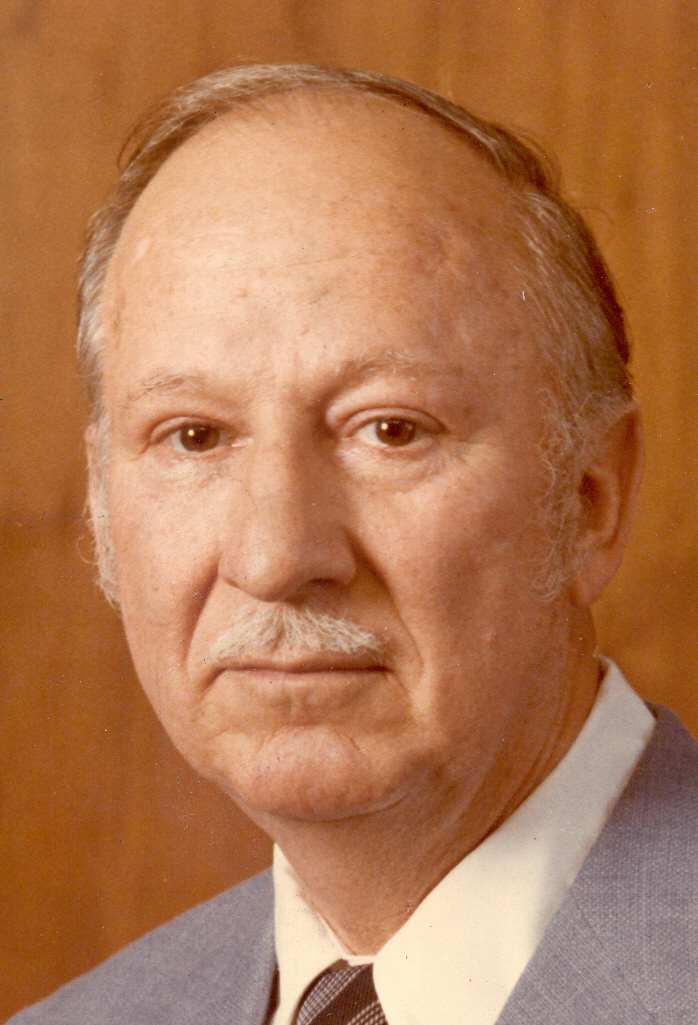
Crawford Jennings Campbell, MD.

From the Obituary of Dr. Mary Sherman by CJ Campbell, MD. 1964
The subject of prostate cancer brings us back to my family and my father. Dad died of what is best described as fulminant prostate cancer in 1983. He was only 69 years old, the cancer had been detected only a year earlier, and there is no history of prostate cancer in our family. While researching for this presentation, I read the obituary that Dad wrote for Dr. Sherman. From his writings it is apparent that he was in her apartment and probably ate appetizers stored in her refrigerator – the same refrigerator that kept the secret weaponized viral cultures. Remember, these viruses are highly contagious and can be spread through the oral route. Was he exposed to the weaponized virus from eating contaminated food, and the altered virus induced his unusual cancer 20 years later? Dad’s body was cremated, so we will probably never know.
The world has moved into the 21st century, and the “Cold War” was over many years ago. But secret biologic operations still go on around the globe, perhaps to wreak unknown havoc on present and future generations. Certain people are drawn to such activities - ready to dump the rules, regulations, and their conscience for money, “national security,” religious extremism, or some other reason. But as medical providers, engineers and technologists, we must all be careful of the projects we undertake, be clear in our ethics, and be strong enough to blow the whistle if necessary on unethical experiments. As this story shows, the spoils of unchecked biological warfare may be dark, indeed, as witnessed by the birth of a carcinogenic virus and the death of many people, including Doctor Mary Sherman.
-----------------------------------------------------------------------------
BIBLIOGRAPHY: